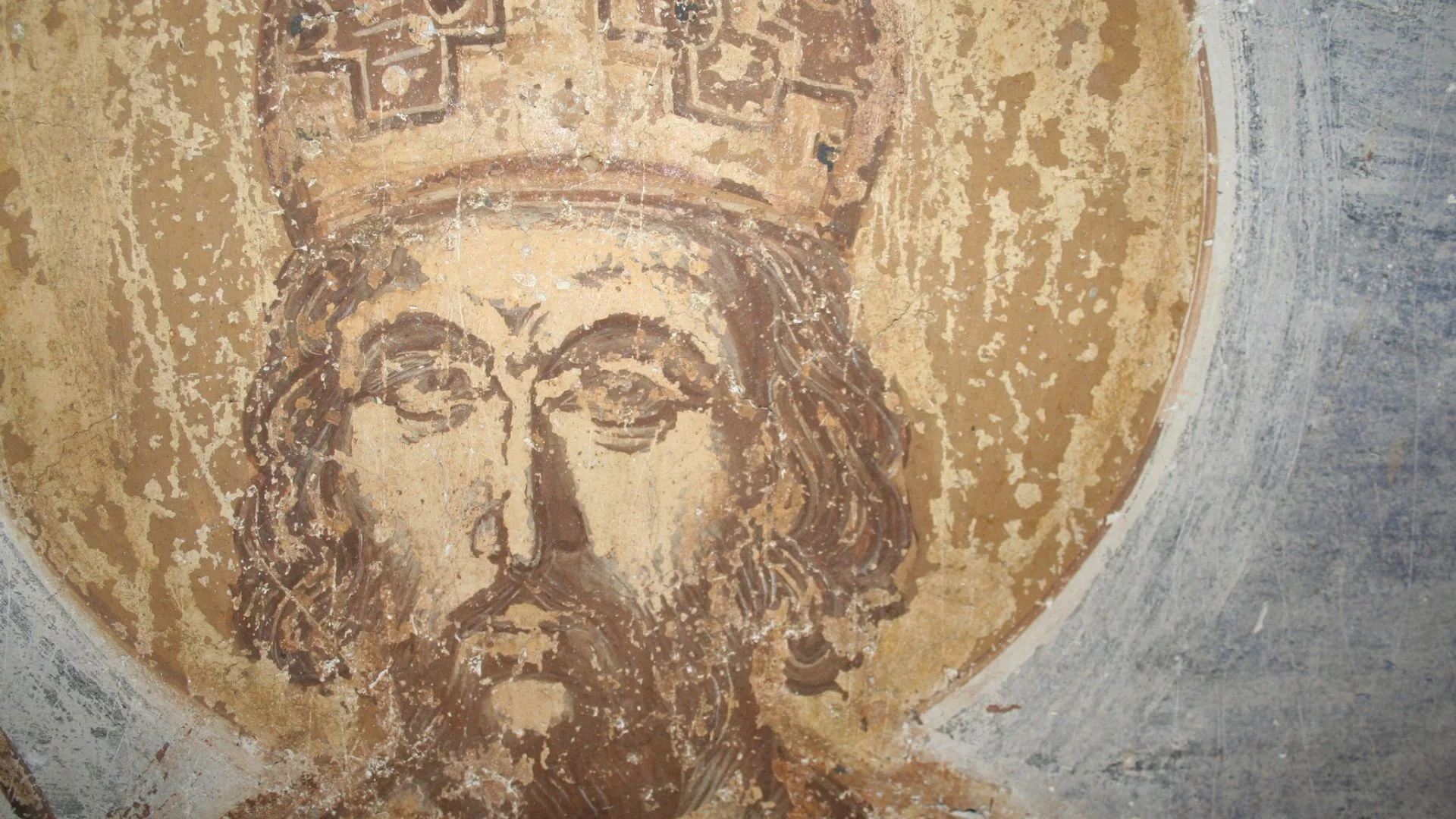A unique depiction of the final Byzantine Emperor, Constantine XI Palaiologos, has been unveiled within the Katholikon of the Old Monastery of Taxiarches in Aegialia.
The frescoes, originating from the late Byzantine era, exhibit exceptional artistic quality and align with the aesthetic standards of Constantinople during that time.
According to amna.gr, the Ministry of Culture reported that conservation efforts at the Katholikon, the primary church of a monastery where monks congregate for services, led to the discovery of this extraordinary portrait.
Dr. Anastasia Koumousi, an archaeologist and director of the Ephorate of Antiquities of Achaia, identified the portrait in the second layer of frescoes, securely dated to the mid-15th century.
The fresco portrays a mature man adorned with imperial regalia. His gold-embroidered purple cloak, embellished with medallions featuring two-headed eagles crowned between their heads, serves as a prominent symbol of the Palaiologos family. These bicephalic eagles, along with other insignia, unmistakably designate the figure as an emperor.
In an interview with ANA-MPA, Dr. Koumousi confirmed that the portrait indeed represents Constantine XI Palaiologos, emphasising its thorough documentation. She explained that the convergence of historical references and stylistic analysis dates the fresco to the mid-15th century.
“It is the only known surviving portrait of the individual in question,” she stated, noting that existing representations of him are from two or three centuries later.
The Monastery of Taxiarches is situated 15 kilometers south of Aigion, at the base of Mount Klokos. The Old Monastery of Taxiarches, also referred to as Palaiomonastero, lies one kilometre higher. Founded by Hosios Leontios of Monemvasia at the close of the 14th century, the monastery received financial aid from the despots of Mystra, Thomas and Dimitrios Palaiologos, who oversaw the construction of numerous structures on the site.
Access to the monastery is through a gate tower featuring defensive openings, and the Katholikon (main church) is positioned on an expansive terrace that houses the primary buildings.
To the south of the Katholikon is the South Chapel, while the North Chapel is located to its north, at a lower elevation. A significant stone staircase, with a wooden upper section built in 1810, connects the upper terrace of the monastery.
This upper terrace contains the hermitage of Hosios Leontios, the single-aisled vaulted church of the Resurrection, and the tomb of Hosios Leontios, all arranged in a stepped layout. The four churches of this monastic complex are adorned with exquisite wall paintings from the Late Byzantine period.
Source: amna

